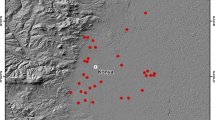Abstract
According to the wide spread use of satellite-based positioning techniques, especially Global Navigation Satellite Systems (GNSS), a greater attention has been paid to the precise determination of geoid models. As it is known, leveling measurements require high cost and long time in observation process that make it not convenient for the practical geodetic purposes. Thus obtaining the orthometric heights by GNSS is the most conventional way of determining these heights. Verifying this goal was the main objective behind the current research. The current research introduces a numerical solution of geoid modeling by applying a surface fitting for a few sparse data points of geoid undulation using minimum curvature surface (MCS). The MCS is presented for deriving a system of linear equations from boundary integral equations. To emphasize the precise applicability of the MCS as a tool for modeling the geoid in an area using GPS/leveling data, a comparison study between EGM2008 and MCS geoid models, is performed. The obtained results showed that MCS technique is a precise tool for determining the geoid in Egypt either on regional and/or local scale with law distortion at check points.











Similar content being viewed by others
References
Erol and Celik (2004) “Precise local geoid determination to make GPS technique more effective in practical applications of geodesy” FIG Work 2004, Athens, Greece, 22–27 May 2004
Dawood GM and Ismail SS (2005) “Enhancing the integrity of the national geodetic data bases in Egypt”. In: Proceeding of FIG Working Week 2005 and GSDI-8 Cairo, Egypt, 16–21 April 2005
Dawood GM, Mohamed HF, Ismail SS (2010) Evaluation and adaptation of the EGM2008 Geopotential model along the Northern Nile Valley, Egypt: case study. J Surv Eng 136:36–40
Drakos N (1997) “Regularizing smooth data with splines in tension.” Computer Based Learning Unit, University of Leads
EL-Shmbaky H (2004) “Development and Improvement the transformation parameters for Egyptian coordinates”, Public Works Department, Faculty of Engineering, EL-Mansoura University, Egypt
Harrie L (1993) Some specific problems in geoid determination. Department of Geodesy and Photogrammetry Royal Institute of Technology, Sweden
Kotsakis C, Sideris MG (1999) On the adjustment of combined GPS/levelling/geoid networks. J Geod 73(8):412–421
Pavlis N, Holmes S, Kenyon S and Factor J (2008) An earth gravitational model to degree 2160: EGM2008. Presented at the 2008 General Assembly of the European Geosciences Union, Vienna, Austria, April 13–18. Available from: http://earthinfo.nima.mil/GandG/wgs84/gravitymod/egm2008/NPavlis&al_EGU2008.ppt
Powell S (1997) Results of the final adjustment of the new national geodetic network. The Egyptian Survey Authority
Saad AA and Dawood GM (2002) A precise integrated GPS/Gravity geoid model for Egypt, V. 24, no. 1. Civil Engineering Research Magazine (CERM), Al-Azhar University, pp. 391–405
Sedeek A (1992) Engineering mathematics literature notes. Faculty of Engineering, Mansoura University
Author information
Authors and Affiliations
Rights and permissions
About this article
Cite this article
Rabah, M., Kaloop, M. The use of minimum curvature surface technique in geoid computation processing of Egypt. Arab J Geosci 6, 1263–1272 (2013). https://doi.org/10.1007/s12517-011-0418-0
Received:
Accepted:
Published:
Issue Date:
DOI: https://doi.org/10.1007/s12517-011-0418-0




